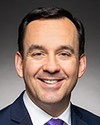It was controversial when this first came about. The FNLMA was controversial at the time. It's not controversial now.
One of the things that I notice as we're doing this study is that everyone keeps trying to find creative ways to tap dance around section 89 of the Indian Act. There are people who say that they'll take an interest in accounts receivable for a business to try to find funding, or that they'll try to do this or that. Everyone's trying to find creative ways around section 89. There has been some discussion at this committee by some witnesses about first nations property ownership that would of course get them out of section 89. That's quite controversial today. Do you have any thoughts on that?




